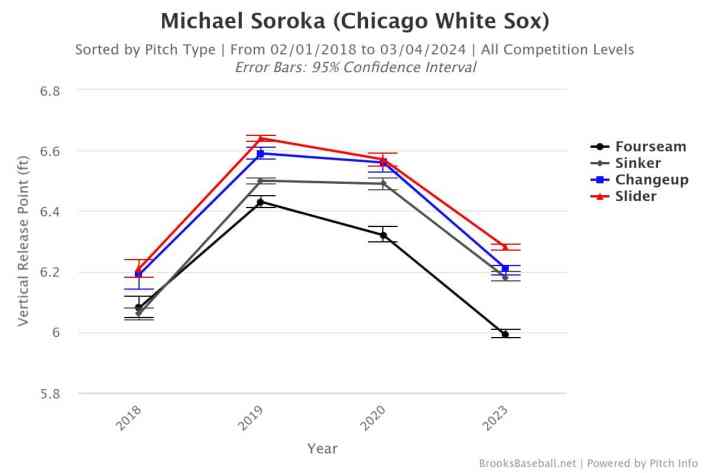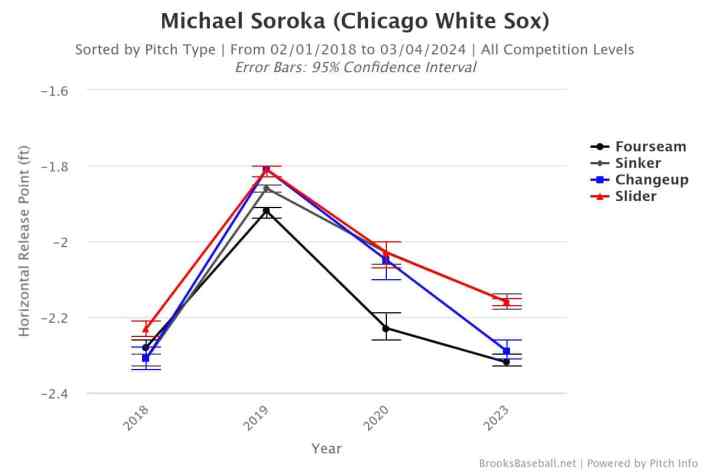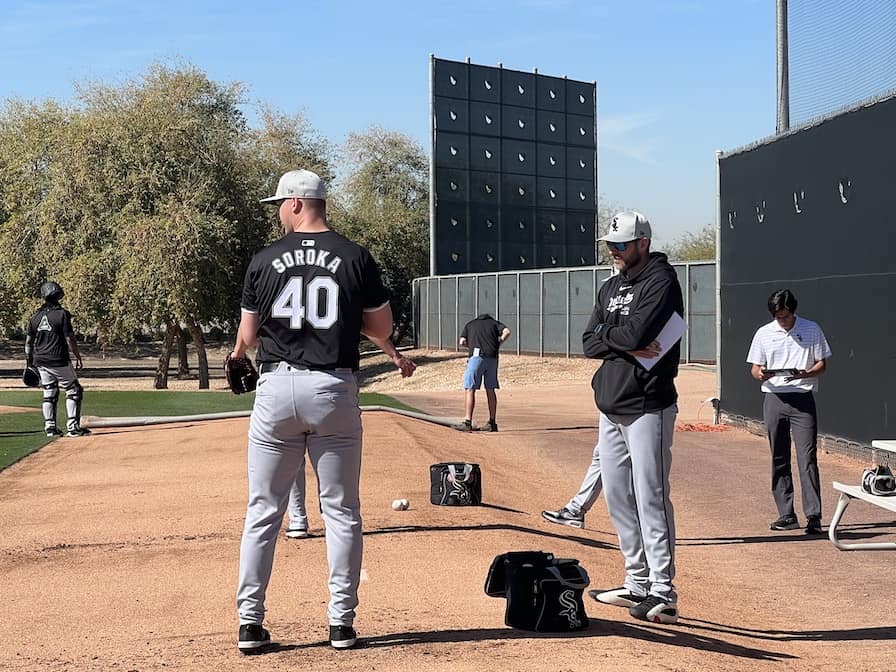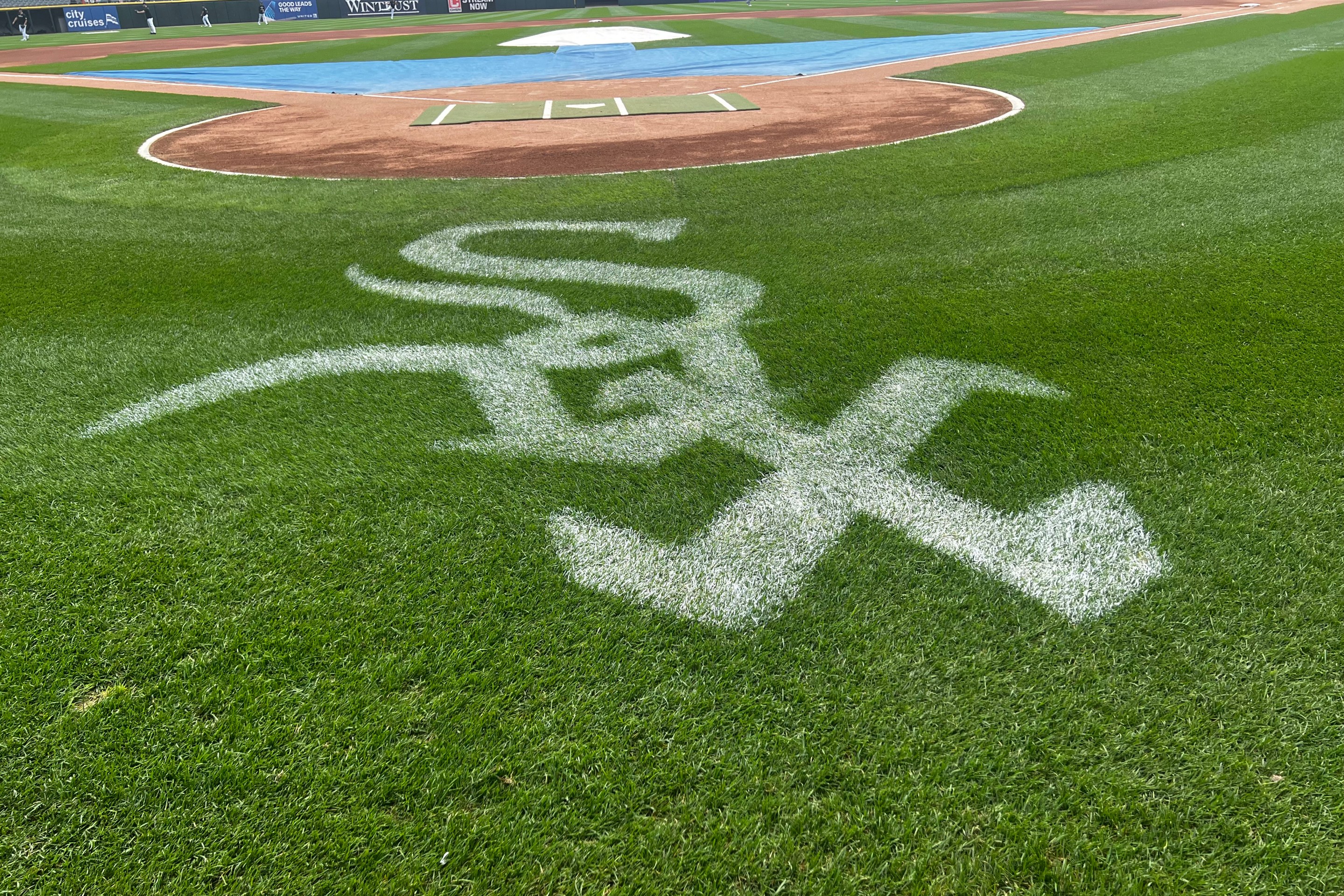When you flip an increasingly expensive reliever coming off a down year for five players, depth is typically the focus. But White Sox right-hander Michael Soroka's past as an All-Star, Rookie of the Year runner-up and top prospect gives him the sort of past ceiling that rebuilding teams are happy to spend a year working to restore.
"There’s a lot of opportunity on the table here, I’m one of the players that’s looking to take advantage," Soroka said upon arrival at camp. "Moving to an organization that really wanted me out there was really important to me. Immediately, I talked to the pitching (coaches) and (found out) what they had for me, and they’re excited to get me out there."
But despite coming to perhaps one franchise where returning to peak performances after two right Achilles tears is not regarded as basically impossible, Soroka's lower half has been through a level of trauma where returning to pitch at at major league level at all is something of a daily marvel. If he can return to above-average performance, then they should probably just make the movie about the orthopedic surgeon, rather than Soroka or Jake Burger.
Soroka stands a solidly built 6-foot-5, so the only qualifier to saying the 26-year-old has ideal starting pitcher build is that he really has ideal starting quarterback build. But at the height of his powers in 2019, even as he seemingly validated his sparkling surface results with a nails performance in the postseason, Soroka was a bit of an oddity. Strikeouts, spin and velocity were exploding in the game, and Soroka was vexing opponents by throwing a low-90s sinker almost half the time, and some variety of fastball almost two-thirds of the time. The more he piled up useful innings featuring marginal levels of bat-missing, the more it seemed like a feature of his weak contact-oriented success.
That ideal build produced a lot of repeatable strike-throwing, as Soroka walked fewer than 6 percent of opposing hitters over the 200-inning sample that his 2018 debut and 2019 breakout season provided. He also possessed some of the best and most intense sinking action in the league, so maybe his success inducing rollover grounders to Ozzie Albies wasn't all that confounding. But the extension in Soroka's delivery was so poor (literally first percentile), especially given his height, that it seemed almost intentional. Scouts did not regard Soroka as a vertical approach-angle marvel, but he threw out of the sort of higher slot that is typically effective for sinkerballers and seemingly wasn't interested in sacrificing that release spot in the name of getting closer to the plate. As always, whatever works.
It would require longer talks with Soroka than wandering into the end of his media scrum to understand the true rhyme and reason. And it probably wouldn't be worth it, because that pitcher is not in White Sox camp.

“He’s a different pitcher right now," pitching coach Ethan Katz said. "He’s moving different down the mound. What he was able to do prior to injuries is something he’s not able to do as much, so we’re kind of working with his new delivery, understanding how good the sinker was in years past, and trying to get him as close to that as possible with where he’s at with his delivery; what he can and can’t do. We’re working through that, trying to gather more information to give him the information that we think is best for him with his usage, as well.”

Long story short: Let's tear your Achilles tendon twice and see if you ride on your back leg exactly the same afterward. Long story slightly less short: Soroka was back to throwing 93 mph heaters in 2023, but releasing them from a more traditional three-quarters slot (with more normal extension). His command and ability to live around the edges was still above the mean, but the drop in his sinker was significantly diminished, so his four-seamer took center stage more frequently.
There's a line of logic that Soroka simply needs more time to adjust his body's new reality before his talent wins the day. But as the score bug in that video clip, a 6.40 ERA and getting flipped to the White Sox to clear a 40-man roster spot would indicate, this new version of Soroka wasn't particularly effective in 2023. No longer throwing a heavy sinker that the opposition cannot lift, Soroka allowed nine home runs in 32⅓ major league innings last season, which is the most untenable element of the whole operation.
It can't be overstated how incredible it is that this man rehabilitated his leg from these injuries to reproduce average major league velocity from a prototypical right-handed delivery. Yet when it comes to pitch design and figuring out ways to get hitters confusing looks that will get them out, "average" and "typical" are no longer terms of praise. In kind, Katz's discussion of Soroka is involved in finding ways to restore his sinker's effectiveness and see what more can be wrung out of how he throws the ball now.
"It’s just some of the stuff that he did, where his arm slot was and how his body was moving down the mound, it’s a different delivery," Ketz said. "So, with a different delivery means a different outcome when it comes to the pitch shapes and stuff like that. We’re working with him with what he’s been doing and how he’s moving now and trying to get him in the best place possible."
To testify to their progress so far, we have two spring training innings that include a rippling solo home run, but also four weak ground balls, and no video or Statcast data to parse it with. Consider both his overhaul, and our ability to assess it any way, both as works in progress.
Every really good major league career usually involves a player navigating at least one significant change in their skill set and finding a way to be effective in spite of it. A more typical major league tenure is one stretch of effectiveness that dissipates as their bodies change, with no counter. Obviously Soroka had a change in his career violently imposed on him in decidedly un-gradual fashion, but arrived with the Sox set on which path he'll take.
"You start talking to some cases around the league that have also dealt with some pretty big issues, and you find it’s actually a lot more common than you’ve been led to think," Soroka said. "It’s just that guys have dealt with it out of the spotlight. Obviously, mine happened well within it. And that’s one thing I’m grateful for is youth. I’m still only 26. Hopefully, I do have lots of years left ahead of me, and I’m going to try to earn that.”





